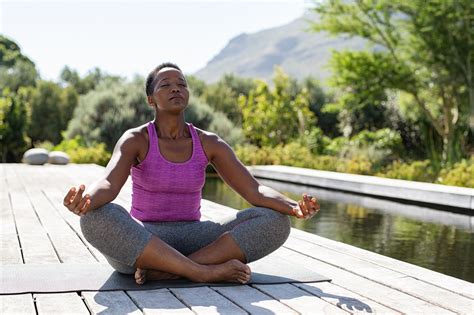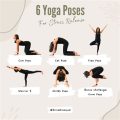Mastering Ancient Yoga Breathing Techniques: A Comprehensive Guide for Modern Times
Yoga breathing, or Pranayama, has been practiced for millennia as part of the holistic ancient yoga tradition. Despite its deep-rooted significance, many people struggle to understand and apply these techniques in their lives today. This guide simplifies ancient yoga breathing methods and explores how they can be adapted for the modern world, focusing on their transformative benefits, historical context, and practical applications.
Introduction: Why Ancient Yoga Breathing Matters Today
In our fast-paced, stress-laden lives, finding tools to maintain mental and physical well-being is crucial. Ancient yoga breathing techniques offer an accessible and effective way to manage stress, boost energy, and enhance mental clarity. While rooted in ancient Indian philosophy, these practices remain highly relevant in contemporary wellness routines. By simplifying these techniques and understanding their underlying principles, individuals can integrate powerful breathing exercises into daily life without the need for extensive knowledge of yoga or Sanskrit.
Key Concepts of Ancient Yoga Breathing
Before diving into specific breathing exercises, it’s essential to understand the fundamental concepts underlying ancient yoga breathing. Key terms include:
- Prana: The Sanskrit word for life force or energy, often associated with the breath.
- Pranayama: The practice of controlling breath to influence the flow of prana throughout the body.
- Nadi: Channels or pathways through which prana flows, often referred to as energy lines in the body.
- Kumbhaka: Breath retention, often used to intensify the effects of breathing exercises.
Types of Pranayama
Various breathing techniques serve different purposes, such as calming the mind, increasing energy, or purifying the body. Some common types include:
- Nadi Shodhana (Alternate Nostril Breathing): Balances the hemispheres of the brain and calms the mind.
- Kapalabhati (Skull-Shining Breath): A quick, energizing breath that cleanses the respiratory system and stimulates the brain.
- Ujjayi (Victorious Breath): A calming breath that creates a gentle sound like ocean waves, often used in yoga asana practice.
- Bhastrika (Bellows Breath): A vigorous breath to increase heat and cleanse the body of toxins.
- Anulom Vilom: Another form of alternate nostril breathing that is believed to remove impurities from the energy channels (nadis).
Historical Context: Yoga Breathing Through the Ages
Ancient yoga breathing practices have their origins in India, dating back over 5,000 years. The roots of these practices are found in sacred texts such as the Vedas and Upanishads, where breath control was discussed as a means of spiritual enlightenment. Later, in the Yoga Sutras of Patanjali, Pranayama was defined as one of the eight limbs of yoga, emphasizing its significance in achieving mental clarity and a higher state of consciousness.
Over the centuries, different schools of yoga expanded on these principles, incorporating more structured breathing practices. The Hatha Yoga Pradipika, written in the 15th century, provides detailed instructions for numerous Pranayama techniques and describes the physiological benefits of controlling the breath.
Current State Analysis: Yoga Breathing in Modern Practice
Today, Pranayama is often seen as an auxiliary practice to physical yoga poses (asanas), but it deserves its own spotlight. Modern science supports the benefits of controlled breathing, particularly in areas such as stress reduction, heart health, and cognitive function. Yoga studios and wellness centers have started incorporating specific breathwork classes that focus solely on Pranayama, reflecting the growing awareness of its importance.
Moreover, apps and online resources have made these techniques more accessible to a global audience. However, many practitioners still face challenges in maintaining a consistent practice due to misconceptions about the complexity of these exercises. Simplifying the approach to ancient breathing can make it more approachable and effective for beginners.
Practical Applications: Using Ancient Yoga Breathing in Daily Life
Pranayama can be integrated into various aspects of daily life to enhance well-being. Here are some practical ways to apply these techniques:
- Morning Routine: Begin the day with five minutes of Kapalabhati or Bhastrika breathing to increase energy and mental focus.
- Stress Relief: Use Nadi Shodhana or Ujjayi breathing to calm the mind during moments of anxiety or overwhelm.
- Exercise Support: Practice deep breathing or Ujjayi during physical workouts or yoga sessions to improve oxygen flow and endurance.
- Sleep Aid: Incorporate slow, controlled breathing techniques, like Anulom Vilom, before bed to relax the nervous system and improve sleep quality.
Case Studies: Real-Life Examples of Yoga Breathing’s Impact
Research and anecdotal evidence both point to the effectiveness of ancient yoga breathing. Several studies have shown how regular Pranayama practice can benefit both mental and physical health. Below are some notable examples:
| Case Study | Details |
|---|---|
| Corporate Stress Reduction | A major tech company introduced Pranayama to employees during stressful periods. Results showed a 20% reduction in stress levels and improved productivity. |
| Heart Health Improvement | Patients with hypertension who practiced Nadi Shodhana daily for six months saw significant reductions in blood pressure, according to a 2020 clinical study. |
| Mental Clarity | A group of university students used Kapalabhati breathing before exams and reported improved concentration and reduced anxiety. |
| Athletic Performance | Professional athletes incorporated Bhastrika breathing into their training, leading to better lung capacity and endurance over a three-month period. |
Stakeholder Analysis: Who Benefits from Yoga Breathing?
The widespread benefits of Pranayama can be enjoyed by diverse groups of people, including:
- Health professionals: Yoga breathing can be integrated into therapeutic settings for treating anxiety, depression, and chronic pain.
- Corporate environments: As stress levels rise in workplaces, many companies are offering yoga and breathwork sessions to improve employee well-being.
- Athletes: Breathing techniques help improve stamina, focus, and recovery, which is critical for high-performance athletes.
- Everyday individuals: Busy individuals benefit from integrating short Pranayama practices to relieve stress and improve mental clarity.
Implementation Guidelines for Practicing Yoga Breathing
Implementing yoga breathing techniques in everyday life can be straightforward when approached in small, manageable steps:
- Start Small: Begin with five-minute sessions and gradually increase the duration.
- Consistency: Practice at the same time each day, whether it’s morning, lunch break, or before bed.
- Focus on Form: Ensure proper posture—sit up straight with a relaxed but alert demeanor.
- Integrate with Movement: Combine breathing with light yoga or stretching for a more comprehensive practice.
- Use Apps and Resources: Utilize modern tools such as yoga apps or guided videos to stay on track.
Ethical Considerations in Promoting Ancient Yoga Breathing
As Pranayama continues to grow in popularity, there are ethical concerns to be aware of:
- Commercialization: Over-commercialization of ancient practices can dilute their spiritual significance.
- Accessibility: Yoga breathing should remain inclusive and accessible to all, not limited to those who can afford expensive classes or retreats.
- Cultural Sensitivity: Yoga originated from Indian traditions, and care should be taken to honor its cultural roots.
Limitations and Future Research Directions
While the benefits of Pranayama are well-documented, there are areas where more research is needed. Key limitations include:
- Limited Scientific Studies: Though promising, there is a need for more large-scale, peer-reviewed studies to validate the long-term benefits of Pranayama.
- Standardization: Techniques vary widely across different schools of yoga, leading to inconsistencies in practice.
- Medical Supervision: People with specific health conditions (e.g., heart disease) should practice caution and seek medical advice before attempting certain Pranayama techniques.
Future research could focus on the long-term effects of daily Pranayama, its impact on mental health in clinical settings, and how it can be adapted to different populations worldwide.
Expert Commentary
Leading experts agree that simplifying ancient yoga breathing techniques can bridge the gap between tradition and modern wellness. Many emphasize that while the physical benefits of Pranayama are well-understood, the spiritual and psychological effects are equally transformative. As this ancient practice continues to evolve, it remains a powerful tool for improving both physical and mental health.








